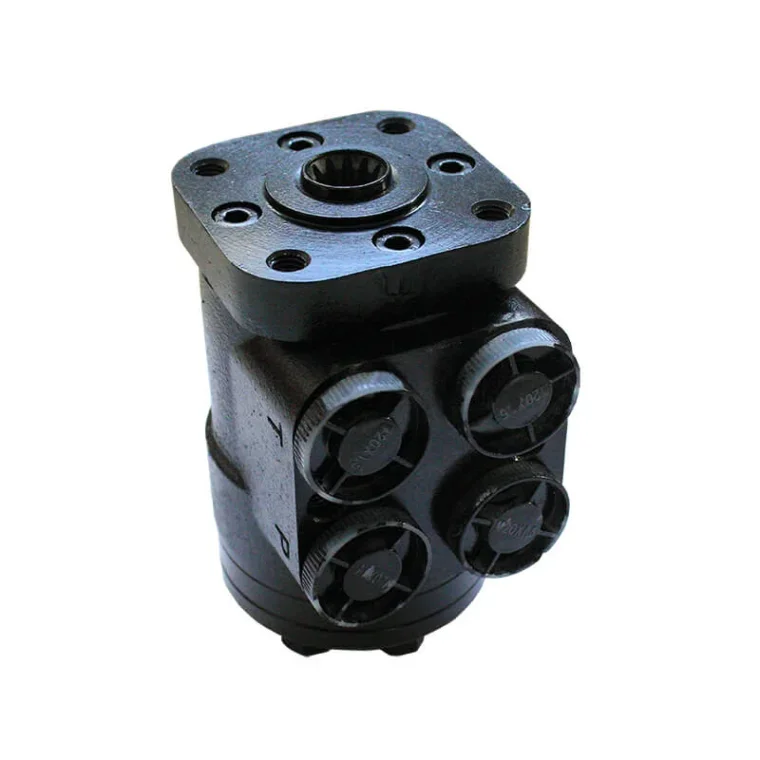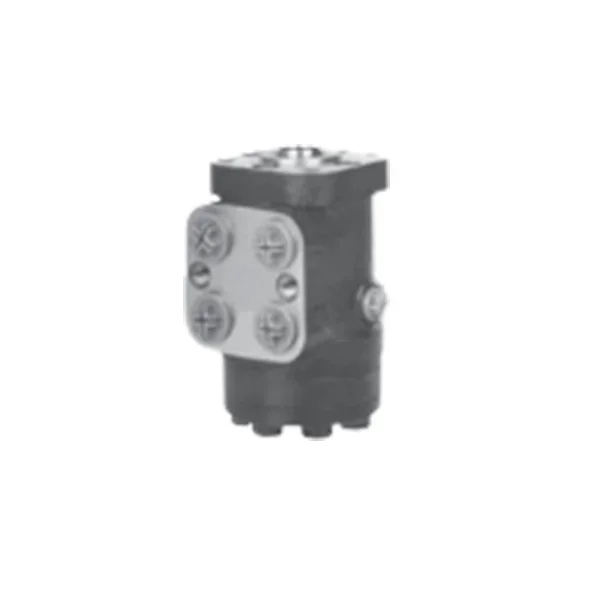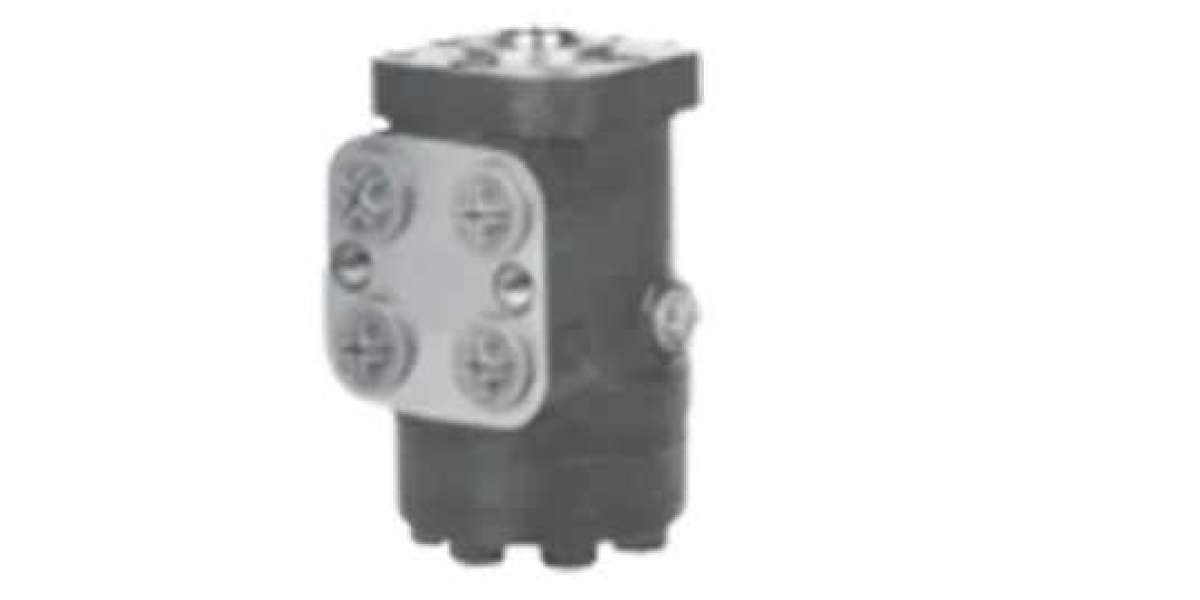What is the importance of proper maintenance for hydraulic steering gear?
How does a rotary vane steering gear operate in marine machinery?
Why is choosing the right steering gear crucial for a vessel?
What are some sustainable manufacturing practices in marine machinery related to steering gears?
How does a ram type steering gear system function in marine machinery?
Having a reliable hydraulic steering gear is paramount. Ensuring smooth navigation and control, this essential component plays a crucial role in your boating experience. From effortless maneuvering to precise handling, the hydraulic steering gear enhances your overall maritime adventures.
Understanding Hydraulic Steering Gear
Functionality of Hydraulic Steering Gear
Hydraulic steering gear is vital on ships, allowing precise control of the vessel's direction. The system uses fluid pressure to transmit force and movement for smooth steering. Hydraulic systems ensure efficient navigation by enabling operators to steer with ease.
Ensures precise control
Facilitates smooth steering
Enhances navigation efficiency
The hydraulic steering gear works through a pump that pressurizes hydraulic oil, which then transmits this force to the steering mechanism. By understanding how hydraulic systems function, ship operators can navigate safely and effectively.

Importance of Understanding Hydraulic Principles
Understanding the basic principles of hydraulic steering gear is crucial for safe navigation at sea. It ensures that you can operate the system correctly and respond effectively in various navigational situations. Knowledge about hydraulics empowers you to maintain control over your vessel.
Enables correct operation
Enhances response capability
Empowers effective navigation decisions
Types of Steering Gears in Ships
Hydraulic Systems
Hydraulic steering gears use fluid power to turn the rudder. They are commonly found on large vessels due to their high force capabilities. This system provides precise control and quick response, enhancing maneuverability during critical situations.
Advantages:
High force output for large ships
Precise control and quick response
Limitations:
Complex maintenance requirements
Vulnerable to hydraulic leaks
Electric Systems
Electric steering gears rely on electric motors to move the rudder. These systems are often used on smaller vessels or as backup systems. They offer simplicity in design and installation but may lack the force needed for larger ships.
Advantages:
Simple design and installation process
Reliable backup system
Limitations:
Limited force output for larger vessels
Dependency on electrical power supply
Mechanical Systems
Mechanical steering gears utilize mechanical linkages between the helm and rudder. This traditional system is robust, reliable, and requires minimal maintenance, making it suitable for various ship sizes.
Advantages:
Robust and reliable operation
Low maintenance requirements
Limitations: 1. Limited maneuverability compared to hydraulic systems. 2. Manual effort required for turning the rudder.
Ram Type Steering Gear System in Marine Machinery
Efficient Hydraulic Conversion
The hydraulic steering gear system is widely used in marine machinery for its simplicity and reliability. This system utilizes a piston-like ram to convert hydraulic pressure into mechanical force, ensuring efficient steering control. The ram type steering gears are favored for their ability to translate fluid power into precise movements.
Efficient conversion: Converts hydraulic pressure into mechanical force effectively.
Precise movements: Allows for accurate and responsive steering control.
Compact Design Benefits
Ram type steering gears are commonly found in smaller vessels and workboats due to their compact design and ease of maintenance. Their space-saving construction makes them ideal for vessels with limited room while still providing reliable steering capabilities.
Space-saving: Ideal for smaller vessels with limited space.
Ease of maintenance: Simple design allows for easy upkeep and servicing.
Rotary Vane Steering Gear Operation
Functionality of Rotary Vane Steering Gear
The rotary vane steering gear operates using vanes that rotate in a cylindrical housing. These vanes convert hydraulic pressure into rotary motion, enabling the system to turn the rudder. This mechanism offers precise and responsive control over your vessel's direction.
In comparison to other steering gear systems, such as ram type systems, rotary vane steering gear provides exceptional response and accuracy. It is particularly suitable for larger ships with complex maneuvering needs due to its ability to deliver high torque output efficiently. Regular maintenance checks are crucial for ensuring optimal performance and increasing the longevity of this system.
Maintenance Tips for Longevity
To ensure your hydraulic steering gear functions smoothly, inspect the vanes regularly for wear and tear. Check the directional control valve for any signs of leaks or malfunctions that could affect the system's responsiveness. Properly maintaining cylinders will help prevent issues with turning capabilities on your vessel.
Regularly check vanes for wear
Inspect directional control valve for leaks
Maintain cylinders properly
Comparison with Other Steering Systems
Power Output and Response Time
Hydraulic steering gear provides higher power output and improved response time compared to electric systems. This means that when you turn the wheel, hydraulic systems react faster due to their design.
Hydraulic systems are known for their ability to deliver a significant amount of force quickly, making them ideal for larger vessels or situations where precise steering is crucial. Electric systems may offer energy efficiency but can lag behind in terms of immediate power delivery.
Flexibility and Precision
While mechanical steering systems are simpler in design, they often lack the flexibility and precision that hydraulic or electric gears provide. Hydraulic steering gear allows for more nuanced control over your vessel's direction, especially when navigating tight spaces or tricky maneuvers.
When choosing a steering gear system, it's essential to consider various factors such as your vessel's size, specific operational requirements, and maintenance needs. These considerations will help you determine whether hydraulic steering gear is the best fit for your boating needs based on physics principles like torque application and degrees of rotation required.

Importance of Proper Maintenance and Operation
Regular Maintenance
To ensure the reliability and longevity of hydraulic steering gear, you must perform regular maintenance. This involves following manufacturer guidelines, conducting routine inspections, and addressing any issues promptly. Neglecting maintenance can lead to system failures that compromise the safety and maneuverability of your vessel.
Regularly checking for leaks, inspecting hoses for wear and tear, and ensuring proper fluid levels are essential maintenance tasks. By staying proactive with upkeep, you can identify potential issues before they escalate into costly problems. Keeping the hydraulic system clean from debris or contaminants will help maintain its optimal performance.
Proper Operation
In addition to maintenance, operating hydraulic steering gear correctly is crucial for its performance. Avoid making sudden or jerky movements when steering to prevent unnecessary strain on the system components. Always follow best practices recommended by the manufacturer to ensure smooth operation.
Proper operation also includes avoiding overloading the steering system beyond its capacity or using it in extreme conditions that could cause damage. By understanding how to use your hydraulic steering gear effectively, you can prolong its lifespan and maximize its value for your vessel's maneuverability.
Sustainable Manufacturing in Marine Machinery
Eco-Friendly Materials
When choosing sustainable manufacturing practices for your hydraulic steering gear, opt for eco-friendly materials. These materials are renewable, recyclable, and reduce the environmental impact of production. For example, using biodegradable hydraulic fluids can minimize pollution risks.
Implementing these materials in your marine machinery contributes to reducing waste and conserving natural resources. By selecting sustainably sourced components, you promote a greener approach to manufacturing that aligns with sustainable principles.
Energy-Efficient Technologies
Incorporating energy-efficient technologies into your hydraulic steering gear enhances its sustainability. Utilize systems that optimize power usage, such as electric actuators or variable-speed pumps. These technologies improve energy efficiency and reduce overall operational costs.
Choosing the Right Steering Gear for Your Vessel
Factors to Consider
When choosing hydraulic steering gear for your vessel, assess factors like size, maneuverability needs, operating conditions, and budget. These considerations ensure the system suits your specific requirements. For example, a larger vessel may require a more robust steering gear design to handle the increased load.
Welcome to consult AJA Technology, we can provide valuable guidance on selecting the most suitable steering gear. Our expertise helps you make informed decisions based on your vessel’s unique characteristics and operational needs.
Prioritizing Key Aspects
Prioritize reliability, performance, and ease of maintenance when finalizing your choice of hydraulic steering gear for your vessel. A reliable system ensures safe navigation during challenging conditions at sea. Optimal performance guarantees smooth turns and precise control over your vessel's direction without compromising safety measures.
Reliability: Ensures consistent functionality even under demanding circumstances.
Performance: Determines how efficiently the steering gear facilitates turns.
Maintenance: Easy upkeep minimizes downtime and ensures continuous operation.
Summary
In understanding hydraulic steering gear, you explored its types, operations, comparisons with other systems, maintenance importance, sustainable manufacturing practices, and selection criteria for vessels. Proper upkeep of steering gears is crucial for safe navigation and efficient ship operations. By choosing the right system and ensuring regular maintenance, you can enhance the longevity and performance of your vessel's steering gear.

Frequently Asked Questions
What is the importance of proper maintenance for hydraulic steering gear?
Regular maintenance ensures optimal performance, reduces the risk of breakdowns at sea, and prolongs the lifespan of the hydraulic steering gear system. It also enhances safety on board by preventing potential failures during navigation.
How does a rotary vane steering gear operate in marine machinery?
A rotary vane steering gear operates by using vanes that rotate within a housing to convert hydraulic power into mechanical motion. This mechanism allows for precise control over the ship's rudder movements, contributing to efficient navigation and maneuverability.
Why is choosing the right steering gear crucial for a vessel?
Selecting the appropriate steering gear ensures compatibility with the vessel's size, type, and intended use. The right choice enhances handling characteristics, improves responsiveness during maneuvers, and ultimately contributes to safe and efficient operation at sea.
What are some sustainable manufacturing practices in marine machinery related to steering gears?
Sustainable manufacturing practices include using eco-friendly materials, optimizing production processes to reduce waste and emissions, implementing energy-efficient technologies in manufacturing facilities, and prioritizing recyclability when designing hydraulic steering gear systems for ships.
How does a ram type steering gear system function in marine machinery?
A ram type steering gear system utilizes cylinders (rams) powered by hydraulic fluid to move the rudder. When pressurized fluid enters one side of a cylinder while exiting from another side simultaneously through valves controlled by helm commands or autopilot systems, it generates force that directs rudder movement.








